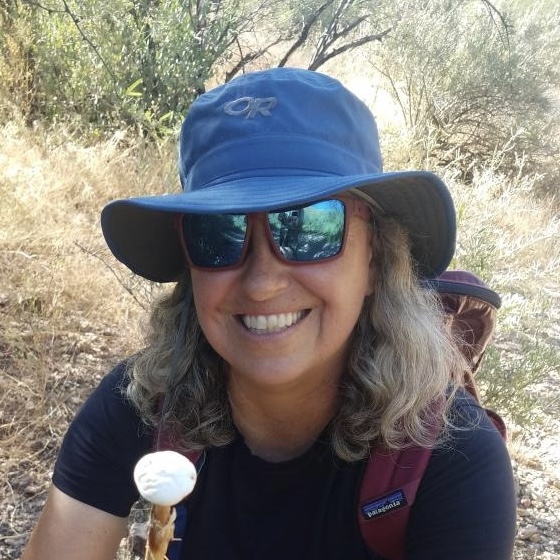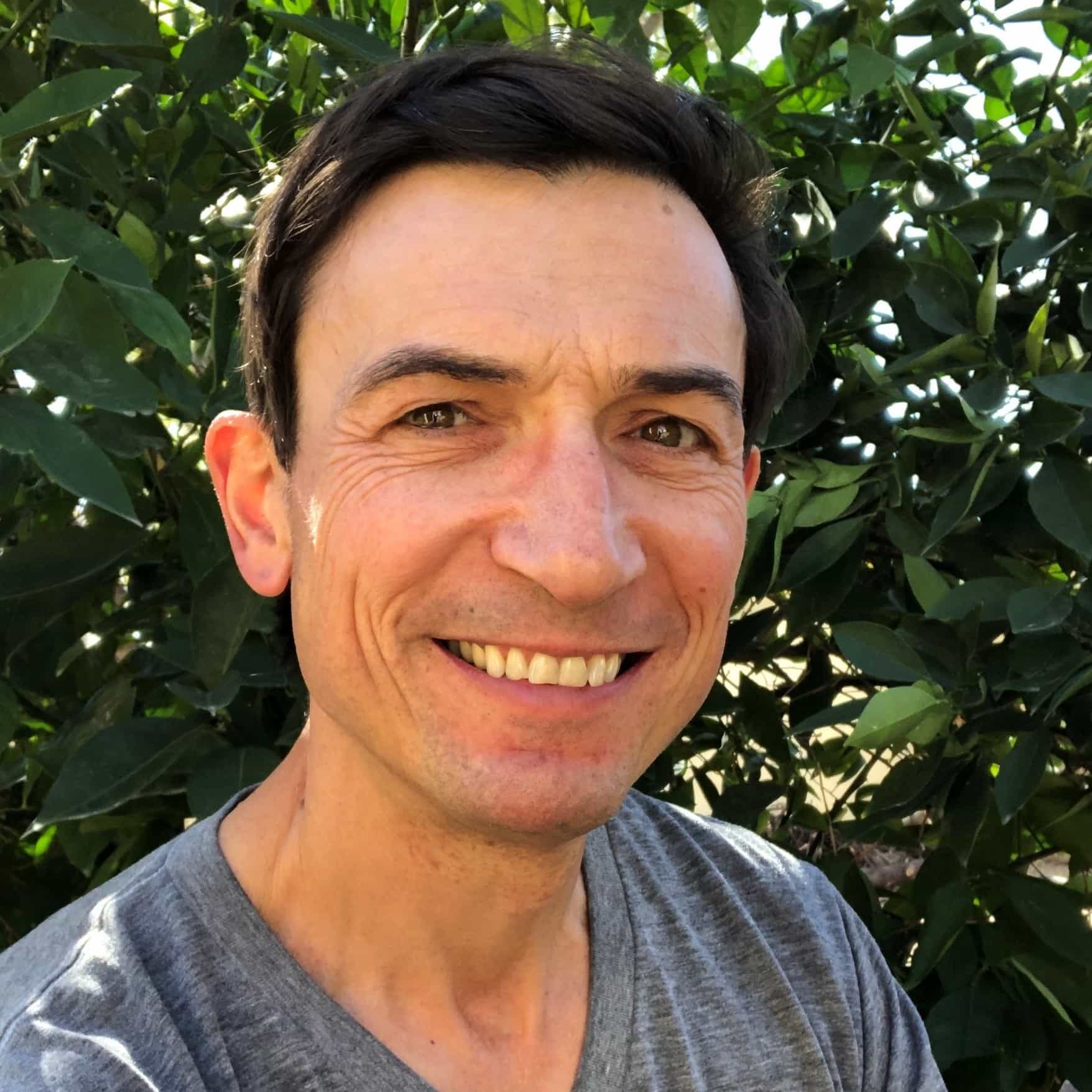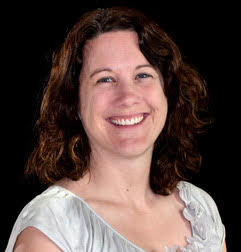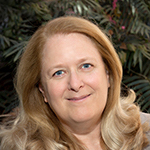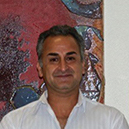Who is Involved
Albert Barberan's research focuses on bridging the gap between the disciplines of general ecology and microbial ecology by analyzing large and complex molecular datasets. A more complete understanding of microbial processes and patterns is essential in order to grasp the relationships among ecosystem functions, global change, and management of natural and working landscapes. Using molecular techniques and data analysis, The Barberan Lab explores the potential for dust-associated microorganisms to successfully colonize distant environments, the genomic basis of microbial adaptation in soils, and the effect of invasive plants on soil microbial communities.
Betsy is an evolutionary ecologist with expertise in plant microbiomes in both wild and agricultural ecosystems. She and her group use the tools of microbiology, molecular ecology, informatics, systematics, organismal biology, and genomics to study the distributions and impacts of plant-associated microbes worldwide, with study sites that range from the Arctic to tropical rainforests. Her interests in fungal biodiversity, plant-microbe interactions, fungal-bacterial dynamics, and molecular ecology are readily translated to animal systems in diverse settings. She collaborates with agricultural experts in academia and industry, natural products chemists interested in pharmaceutical drug discovery, and academic partners interested in identifying and translating principles of biodiversity research to human endeavors. As Curator of the Robert L. Gilbertson Mycological Herbarium she oversees the largest collection of fungi in the southwestern US. Betsy is a committed mentor, an award-winning instructor, and is active in outreach, especially with high school students, K-12 teachers, and the broader Arizona community.
Regis Ferriere is interested in the interplay of ecological and evolutionary processes: how ecological interactions shape selection acting on individual traits variation, and how in return adaptive traits evolution influences population dynamics, community structure and diversity, and ecosystem function. Regis Ferriere's research involves three levels of investigation. (1) Mathematical foundations of eco-evolutionary modelling: deriving ‘macroscopic’ models of quantitative traits evolution starting from ‘microscopic’ models of individual interactions and heritable variation. (2) Applying the general theory to major questions in ecology and evolution, including the evolution of cooperative interactions at the gene, cell, organism and population levels; life history evolution; evolution of species interactions and community structure and diversity; and eco-evolutionary responses of populations, communities and ecosystems to environmental change. (3) Connecting the theory to specific empirical systems. Regis Ferriere is involved in the development of the CNRS-ENS Ecotron in Paris, in a partnership with Biosphere 2 at the University of Arizona, to promote next-generation large-scale experiments on complex ecological systems under highly controlled environmental conditions.
Dr. Bonnie Hurwitz is an Assistant Professor of Agricultural and Biosystems Engineering at the University of Arizona and Bio5 Research Institute Fellow. She has worked as a computational biologist for nearly two decades on interdisciplinary projects in both industry and academia. Her research on the earth microbiome incorporates large-scale –omics datasets, high-throughput computing, and big data analytics to answer questions in systems biology. In particular, Dr. Hurwitz is interested how viruses re-engineer host metabolism and the implications on host-driven biogeochemical cycles in the ocean at a global scale. Dr. Hurwitz is well-cited for her work in computational biology in diverse areas from plant genomics to viral metagenomics with over 1300 citations.
Dave Moore uses ecological knowledge and quantitative models to improve mechanistic understanding of the uptake, storage and release of carbon from ecosystems to provide accurate predictions of the role of terrestrial ecosystems in global biogeochemical cycles.
I am an integrative microbial ecologist with training in microbial ecology, evolutionary biology, mycology, and genomics. My primary research interest is on plant-microbial interactions, specifically on asymptomatic endophytic fungi. Endophytes occur within all plant species, where they can provide defense against herbivores and pathogens, as well as tolerance to heat and drought. Using field sampling, traditional culture-based methods, and next-generation sequencing of genomes and communities I am interested in characterizing the biotic and abiotic factors shaping the assembly of plant-associated fungal communities, how community structure and diversity impacts ecosystem function, and the evolutionary dynamics of fungal symbiont evolution in the context of closely related pathogens and saprotrophs.
My research team quantifies the microbial imprint on atmospheric composition and climate using an interdisciplinary set of methods, ranging from genomics to micrometeorology. We focus on resolving the genomic underpinnings of microbe-mediated biogeochemical transformations in soils that drive significant atmospheric fluxes. The goal of my work is to determine when and how projections of biogeochemical transformations are improved by better representation of underlying biological drivers.
The Matzkin lab investigates how the ecology of a species shapes patterns of variation at multiple levels (genes, pathways, transcriptomes, genomes, physiology, behavior and life history), how populations adapt to environmental shifts, the implication of ecological adaptation in the process of speciation and the role of sexual selection and sexual conflict in the evolution of reproductive incompatibilities. Our research revolves around these fundamental aspects of evolutionary biology. We have traditionally focused on a group of cactophilic Drosophila that inhabit the deserts of North America. These Drosophila species are an excellent system to study given that their ecology is well understood and the fact that we can perform many genetic, genomic, manipulative and life history experiments. Additionally, we work on understanding the genomic basis of resistance to Bacillus thuringiensis (Bt) toxins in Lepidopteran agricultural pest, to provide insight into the efficiency and long-term efficacy of insect pest control strategies.
Over the last two decades my work has focused on developing computational platforms and enabling technologies, primarily directed towards improving research productivity and collaboration for interdisciplinary teams and virtual organizations. The key thrust areas for my work encompass life cycle management for:
- High throughput and automated bio sample processing systems
- Highly scalable data and metadata management systems
- High throughput and high performance computing systems
My recent work has been directed towards supporting pervasive computing needs for mHealth (mobile health) initiatives and health interventions, with focus on developing study management platforms that leverage cloud based telephony, messaging and video in conjunction with wearable’s and sensors. Platforms and tools developed by team are actively utilized for:
- Managing bio samples and data for clinically certified (CAP/CLIA) NGS pipelines
- Large scale genotyping (million+ samples) platforms with robotic automation
- National scale Cyberinfrastructure (iPlant) that facilitate global team of researchers to effectively manage their data, computation and collaborations using a cohesive computational platform
The Carini lab is broadly focused on understanding how microbes help make Earth habitable for humans. This view leads us to diverse questions in both terrestrial and aquatic ecosystems with the goal of understanding how microbial communities transform important nutrients, remove pollutants, affect soil fertility and influence aquatic productivity. By studying the growth of microbial cultures, their genome sequences and their environmental distributions, we design experiments that help uncover new and unusual biogeochemical cycles and provide hypothesis-based explanations for long standing geochemical observations. Integrated ecosystem genomics-based approaches such as these are invaluable to help us understand the roles of microbes on Earth. We are also interested in how exposure to cosmopolitan environmental microbes that live in soil, water and dust influences human health. Using a combination of high-throughput cultivation and laboratory study, we seek a mechanistic understanding of the factors that influence the distributions of these microbes in their natural environment and the specific ways that exposure benefits (or is detrimental) to human health.
My research group studies the ecology of soil microbes. Microbes define soil health, support ecosystem services, and maintain plant diversity. They are critical to ecosystem resiliency, especially in the context of climate change and the conservation challenges we currently face. Working across a range of ecosystems from lowland tropical forests, to high elevation conifer forests, to semi-arid grasslands, we use field-based experiments, microbiological techniques, and contemporary genetic tools to test the effects of plant-microbe interactions on plant and microbe community diversity, understand how environmental shifts will alter these interactions, and accurately predict the subsequent impacts on ecosystem function. For more information please visit: rachelgallery.arizona.edu
My lab studies the microbial ecology and recovery of disturbed and marginal terrestrial ecosystems that are characterized by oligotrophy or nutrient poor conditions. We seek to understand patterns in microbial diversity that correlate with the sustainability of vegetation in disturbed regions such as mining wastes and arid desert ecosystems. Both culture- and molecular/phylogenetic-based approaches are used including metagenomic analysis of ecosystem communities. A second focal area is the study of “eco-friendly” microbial surfactants (biosurfactants) including discovery of new biosurfactants, elucidating the microbial physiology associated with biosurfactant production as well as the role of biosurfactants in microbial survival. This work is being translated into potential biomedical and environmental applications, e.g., harvesting rare earth elements from industrial waste streams.
As the world faces global change and resource limitation, understanding the planet’s microbes (e.g. bacteria, archaea) becomes a necessity. This is because microbes drive the biogeochemistry that runs the planet, and are central to human endeavors, from food to health to industry. Viruses that infect microbes profoundly shape microbial populations and processes by acting as both major predators and sources of new genes. We work to understand viral impacts on globally important microbial processes. As empiricists, we test hypotheses through direct systems-level studies of natural populations, complemented by developing and studying model phage-host systems in the lab with the goal of generating the data required for predictive ecosystem modeling. Practically, we develop new ways to “see” viruses — in the microscope, in environmental sequence datasets, in experiments — i.e., we are learning how to “count” across different data types. Given this quantitative toolkit, current research questions include: 1. What is a viral population or species? 2. How do viral assemblages change over space and time, and what drives these patterns? 3. How do bottom-up processes impact top-down predators?
I study how climate change in the Western US is influencing the carbon and water cycles in mountain forests. I also study how the emissions of organic compounds from forests across the globe influence atmospheric chemistry, particularly with regard to the the lifetime of compounds that influence climate. In the past, I have studied plant-microorganism interactions in the alpine ecosystem nitrogen cycle and I have studied the evolution of C4 photosynthesis in plants.
My research focuses on what might be called “biogeochemical ecology,” asking questions about how climate interacts with plant physiology, demography, and ecological processes to influence or control biogeochemical cycling from local to global scales. Just one example of the need for more complete understanding in this area is the lack of species interactions in modern global climate models, even though such interactions can be critically important in controlling ecosystem carbon cycling and hence, feedbacks to climate. Progress has been limited by the difficulty of bridging the gap between local-scale ecological interactions and broader biogeochemical processes. I use multidisciplinary approaches that combine classical techniques of field ecology and forestry with advanced technological methods (e.g., the micrometeorological eddy covariance method, isotopic techniques) and modeling to integrate biogeochemical processes to ecosystem scales.
Rod Wing is the Director of Arizona Genomics Institute and Bud Antle Endowed Chair Professor - The School of Plant Sciences, Ecology & Evolutionary Biology. His research interests consist of Comparative Evolutionary Genomics of Crop Plants (Rice, Oryza, Maize, Cotton, Brassica, Amborella), Genome Sequencing and Physical Mapping, Bioinformatics, BAC Library Construction & Distribution (www.genome.arizona.edu/orders), and Education and Outreach - Plant Science Family Nights.
My lab studies how microbes respond to, and in turn help shape, environmental change. We are particularly interested in global change interactions with biogeochemical cycling. Our lens into microbial community composition and function is through molecular “meta-omics” tools, which we bring to robust interdisciplinary collaborations with biogoechemists and modelers to generate a systems-level understanding of ecosystems undergoing change. To learn about our specific research projects, please visit our lab website at http://openwetware.org/wiki/Main_Page
As the world faces global change and resource limitation, understanding the planet’s microbes (e.g. bacteria, archaea) becomes a necessity. This is because microbes drive the biogeochemistry that runs the planet, and are central to human endeavors, from food to health to industry. Viruses that infect microbes profoundly shape microbial populations and processes by acting as both major predators and sources of new genes. We work to understand viral impacts on globally important microbial processes. As empiricists, we test hypotheses through direct systems-level studies of natural populations, complemented by developing and studying model phage-host systems in the lab with the goal of generating the data required for predictive ecosystem modeling. Practically, we develop new ways to “see” viruses — in the microscope, in environmental sequence datasets, in experiments — i.e., we are learning how to “count” across different data types. Given this quantitative toolkit, current research questions include:
- What is a viral population or species?
- How do viral assemblages change over space and time, and what drives these patterns?
- How do bottom-up processes impact top-down predators?
Hanna (Johnny) Fares, Ph.D., is Professor and Associate Head in the Department of Molecular and Cellular Biology. Dr. Fares uses Caenorhabditis elegans and mammalian cells as models to decipher molecular mechanisms of lysosome formation and the molecular basis for symptoms in lysosomal storage disorders.
Projects
A.E. Arnold (CoPI). National Science Foundation. Collaborative Research: Macrosystems Research Award: Distributions of macrofungi: quantifying ecosystem and climate drivers of fungal reproduction. 2022-2025.
A.E. Arnold (CoPI). National Science Foundation, Systematics and Biodiversity Science: Leveraging historical collections and new surveys to characterize foundational shifts in vital symbioses in the threatened Arctic. 2021-2023.
A.E. Arnold (CoPI). National Science Foundation. Collaborative Research: Growing Convergence Research: Growing a new science of landscape terraformation: the convergence of rock, fluids, and life to form complex ecosystems across scales. Senior Personnel and Executive Committee member. 2021-2026.
S. Saleska (PI), A.E. Arnold (CoPI), R.A. Gallery (CoPI), B.L. Hurwitz (CoPI), J. Croissant (CoPI), A. Barberan (SP), K. Dlugosch (SP), R. Ferriere (SP), L.M. Matzkin (SP), L. Meredith (SP), W. D. Pauli (SP), Y. Song (SP), M. Tfaily (SP), J. U’Ren (SP) S. Vincent (SP), R.E. Wing (SP). National Science Foundation, “NRT-URoL: BRIDGES - Building Resources for InterDisciplinary training in Genomic and Ecosystem Sciences.” DGE-2022055 9/2020-8/2025.
Y. Carriere (PD), B. Tabashnik (CoPD), L. M. Matzkin (CoPD), and J. Fabrick (CoPD). USDA-NIFA-BRAG. “Genomic Resistance Risk Assessment for Vip3-Producing Transgenic Crops in Helicoverpa zea”. 9/1/2020 - 8/31/2023.
L. M. Matzkin (PI), F. Diaz (CoPI) and C. Cultid-Medina (CoPI). University of Arizona and the Mexican Council for Science and Technology (CONACYT)-CAZMEX. “The role of climate change and biological interactions in modulating reproductive isolation in cactophilic Drosophila”. 6/1/2020 - 4/30/2022
B. Tabashnik (PD), L. M. Matzkin (CoPD), J. Fabrick (CoPD) and Y. Carriere (CoPD). USDA-NIFA. “Population genomics of Bt resistance in Helicoverpa zea”. 6/1/2020 - 5/31/2023.
B. Tabashnik (PI), Y. Carriere (CoPI) and L. M. Matzkin (CoPI). Genetics of Pest Resistance to Bt Toxin Cry1Ac. University of Arizona-Core Facilities Pilot Program. 11/15/2019 - 11/14/2020.
L. Matzkin (PI). University of Arizona, CALS Innovation Venture Investment Project. “Inducible toxic ejaculate in Drosophila suzukii: An innovative approach for insect population control.” 01/2020 – 6/2021.
National Science Foundation Biology Integration Institute Virginia Rich
Ecosystem Genomics Graduate Interdisciplinary Program

The ultimate aim of this new Ecosystem Genomics GIDP is to foster a diverse new generation of transdisciplinary scientists to address the challenges of sustaining natural and managed ecosystems on which humans depend, including wildlands, agricultural systems, forests, arid lands, and marine environments.
Ecosystem Genomics is an emergent, interdisciplinary area of study that integrates across biotic systems "from genes to ecosystems", with the aim of solving grand challenges in sustainability and innovation in a rapidly changing world. By bringing together ecosystem- and genomic sciences in a framework that connects ecology, sustainability, data science, and applications, ecosystem genomics students have the potential to flourish in diverse careers in industry, government, academia, and non-profit sectors.
The coursework supported by this PhD minor and graduate certificate will help students think across scales as they develop skills in ecosystem science, genomics, interdisciplinarity, scientific communication, and collaboration. At is core the minor will foster and extend students’ excellence in areas such as data science, microbiology, plant sciences, insect science, environmental science, atmospheric science, biosystems engineering, ecology and evolutionary biology, geography, and information science, and it is intended to attract students majoring in these UArizona programs. We seek students who want to translate ideas into meaningful scientific advances while cultivating deep and broad skill sets to solve grand challenges relevant to regional, national, and international issues in sustainability and innovation.
